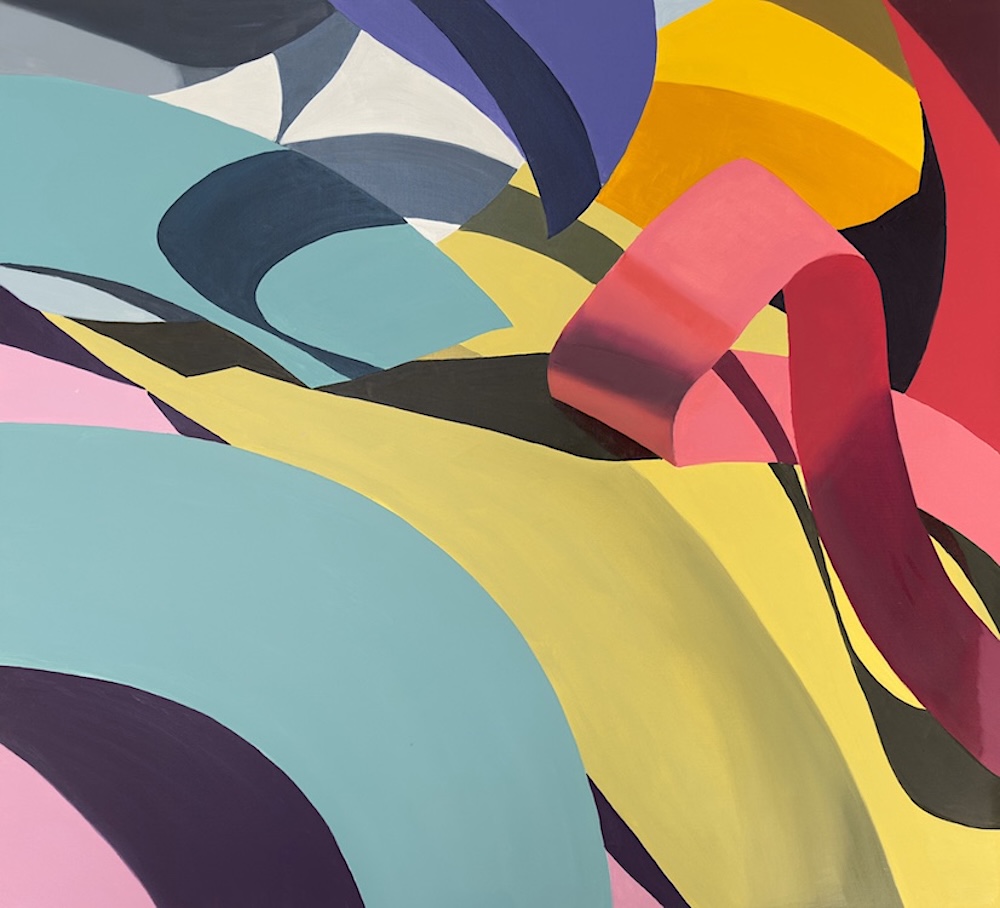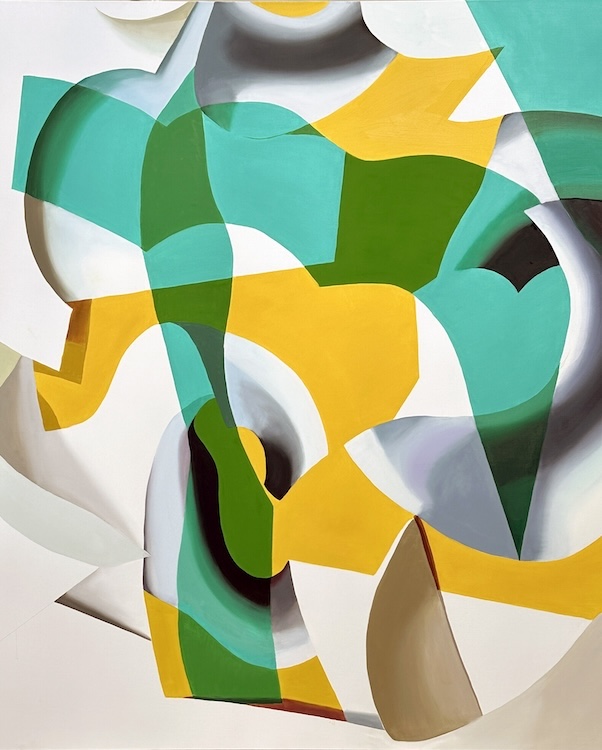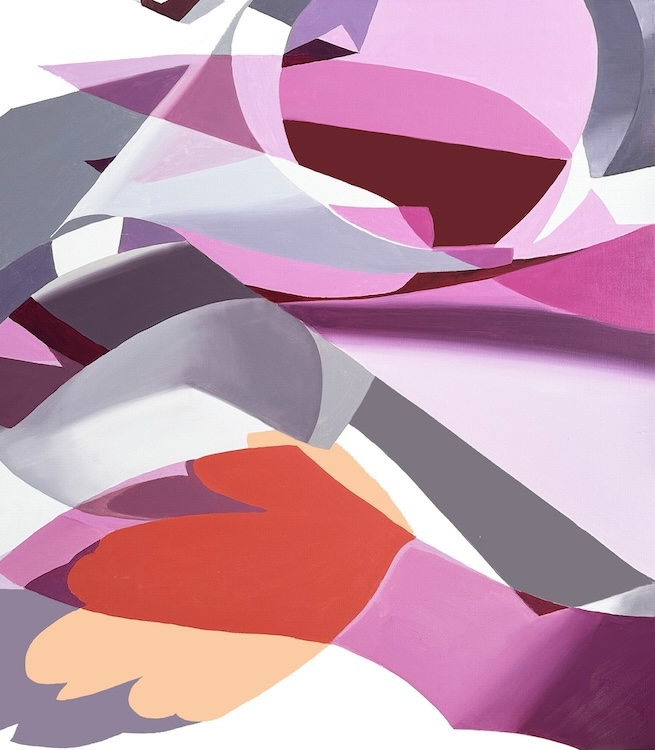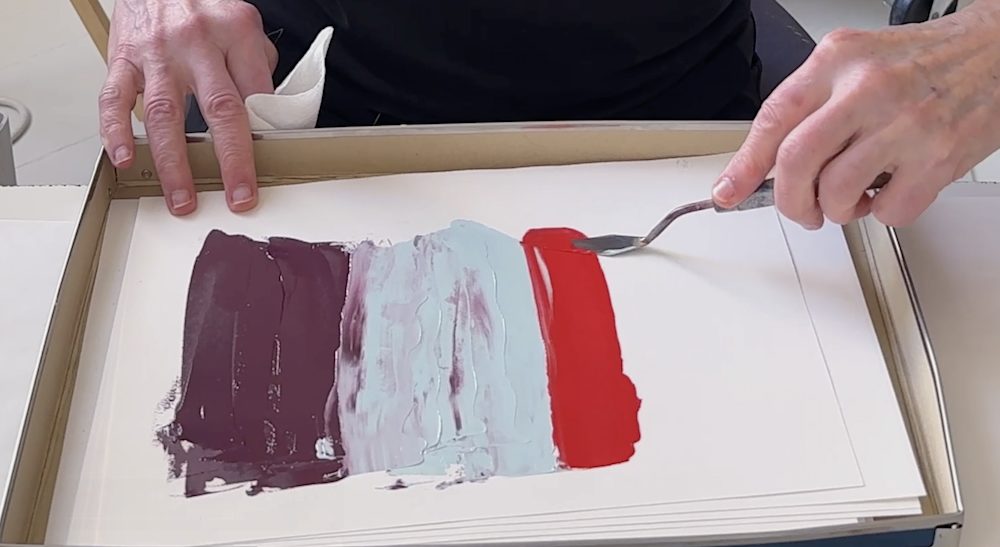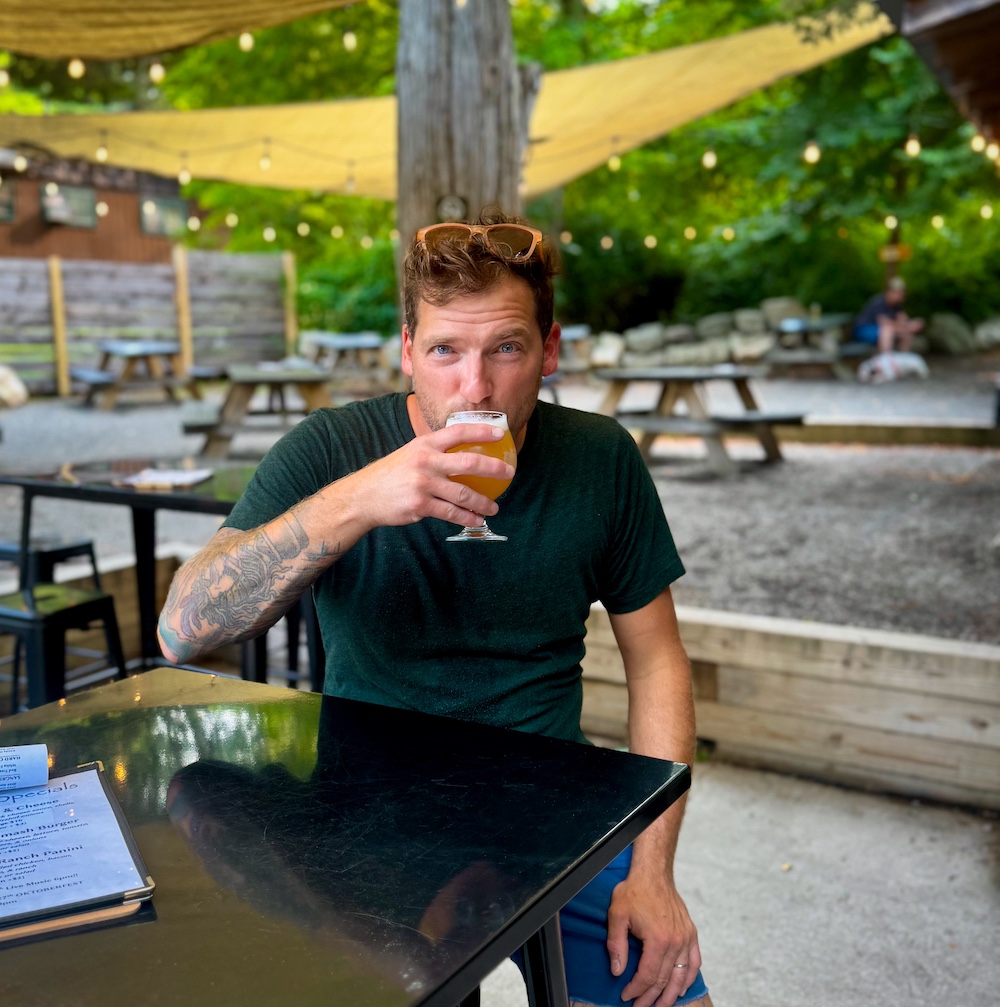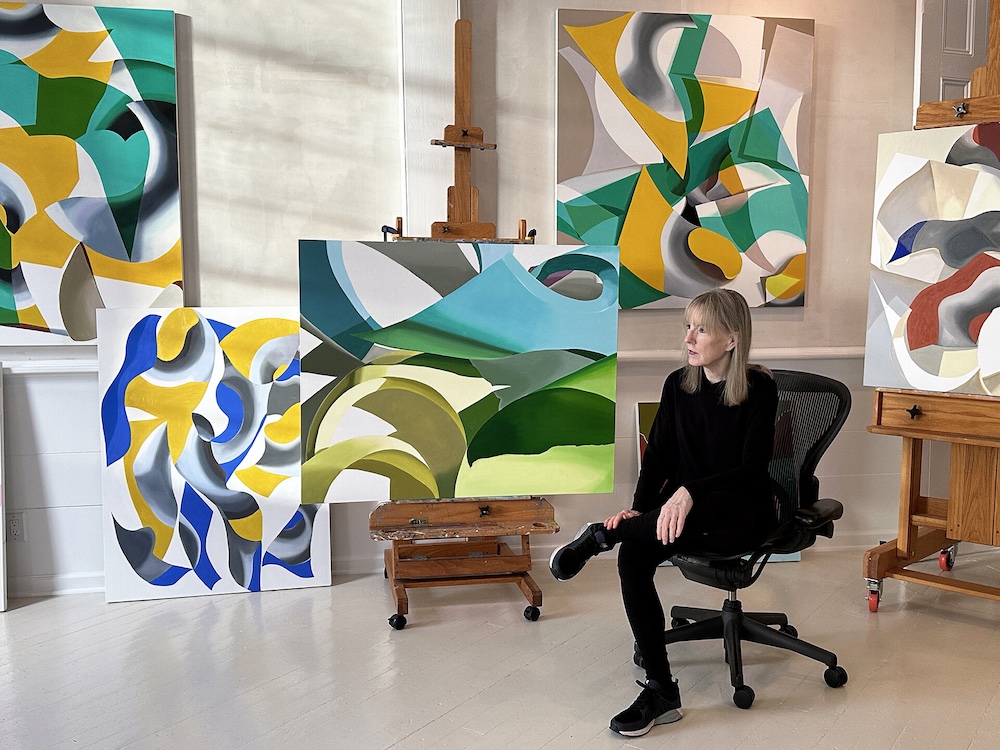
In the Studio With Trailblazing Artist Ginnie Gardiner
Next in our In the Studio series, we feature Catskill-based artist, Ginnie Gardiner. Ginnie’s journey as an artist began with a love for drawing at the age of 5 and was further nurtured in her teens when a family member gifted her oil paints. As a professional artist in New York City and Upstate New York, she built a distinguished career spanning over four decades, featuring numerous solo and group exhibitions.
A true trailblazer, Ginnie was among the first to integrate digital technology, photography, natural sunlight, and three-dimensional shadow into her creative process. Today, she continues to explore these multimedia techniques to capture the interplay of color and light that defines her work.
Recently, Ginnie welcomed us into her studio to share insights into her artistic journey — from her exploration of color and curatorial work to a brief foray into advertising before returning to painting full-time. Watch the video below, created in collaboration with littlebitcreates, for an exclusive look into Ginnie Gardiner’s world.
INSIDE+OUT: Ginnie, tell us what inspired you to become an artist?
Ginnie Gardiner: When I was 13 years old, my ninth-grade art teacher gave me The Shape of Content by Ben Shahn. This book inspired me to become an artist. When I was 15 years old in Huntington, Long Island, my stepmother, an artist, was working in the watercolor medium, and she gave me her oil paints that were left over from her studio years at Pratt Institute. I brought the oil paints to my art classes at Huntington High School and started creating oil paintings on large, gessoed masonite panels. I had started drawing when I was five years old and was excited to work with oil paints.
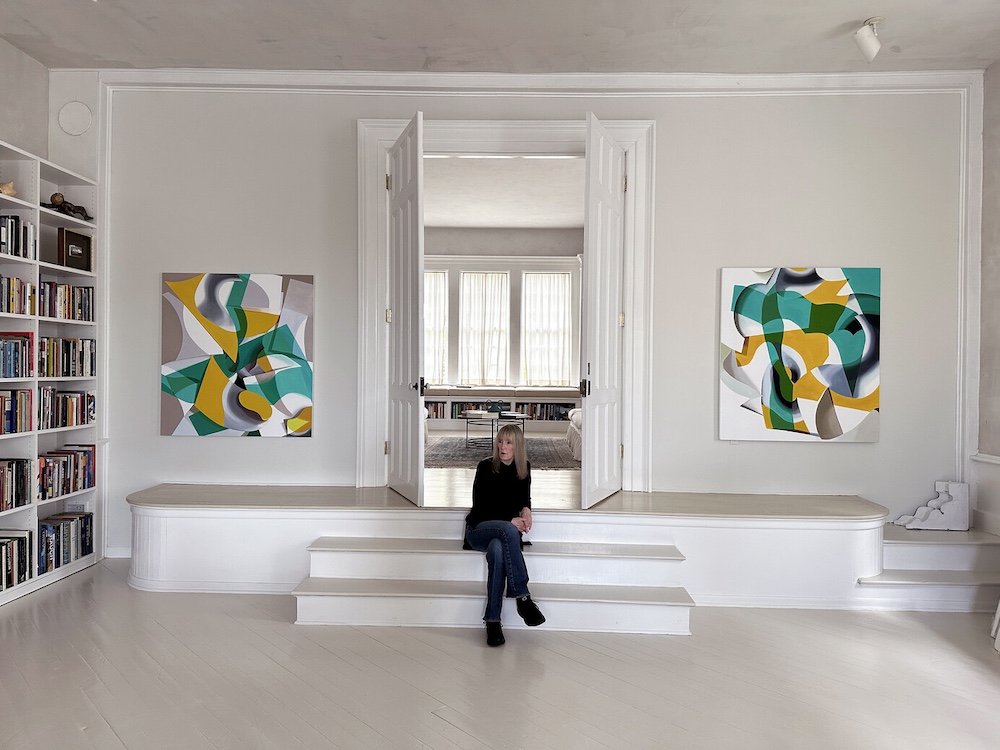
How did your education prepare you for a career as an artist?
Ginnie Gardiner: At Cornell University in Upstate NY, many of the art professors were from New York City, and they would tell us about the shows they’d seen in The City and recommend galleries for us to visit as part of our painting critiques.
I remember the smell of turpentine in Franklin Hall, now Tjaden Hall, where we had our art classes. My painting professor, the color field painter Friedel Dzubas, made me really think about color as a subject. Also, we had rigorous drawing training. I had a great drawing professor, Gillian Peterson Krag. She was deeply interested in each of the students. Zevi Blum was another excellent teacher. He gave us very interesting drawing assignments, ranging from conceptual exercises to drawing from the model. We had traditional printmaking classes, including etching and lithography, but I especially enjoyed my silkscreen classes with Steven Poleskie.
Our classes were very small, so we got to know each other well, and we had painting studios. I still think about the communal brush-washing sink outside my studio on the second floor! I also appreciated the fact that we had a wider curriculum requirement for an art degree. I loved the history of science, art history, and music classes, and I audited lectures given by the architecture professors.
The most striking aspect of Cornell was the magnificence of its landscape. In 1973, we witnessed the building of the Herbert F. Johnson Museum, designed by architect IM Pei & Partners. The building was situated above Ithaca, overlooking stunning views of Lake Cayuga. This was an exciting time to be on campus.
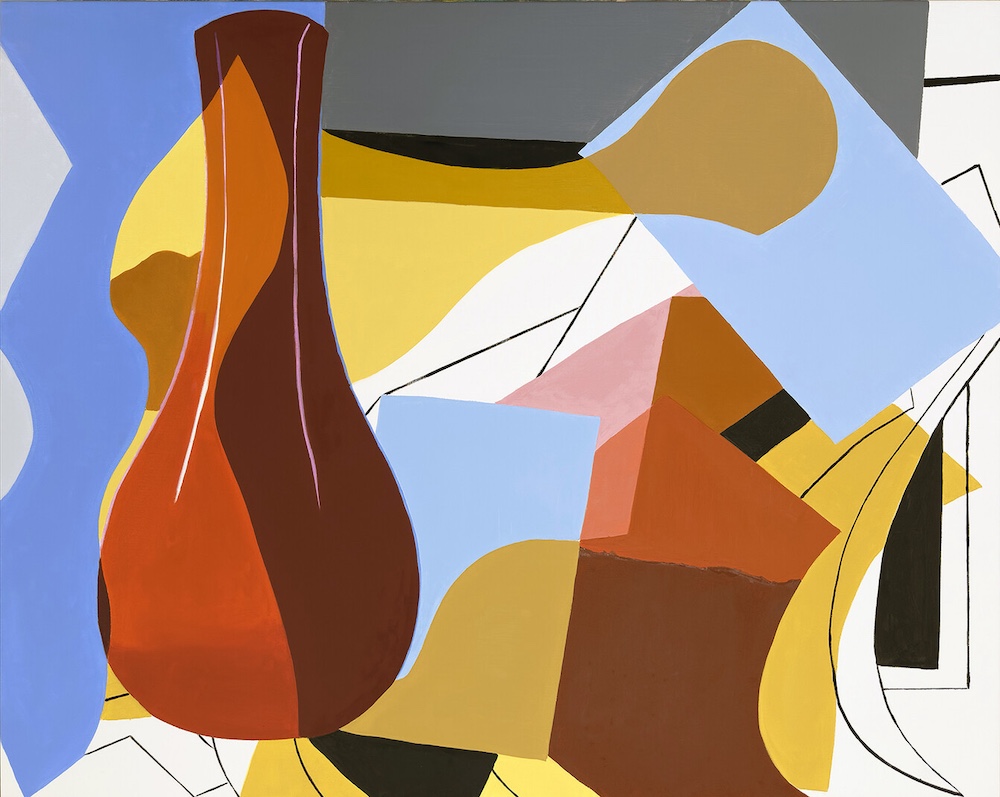
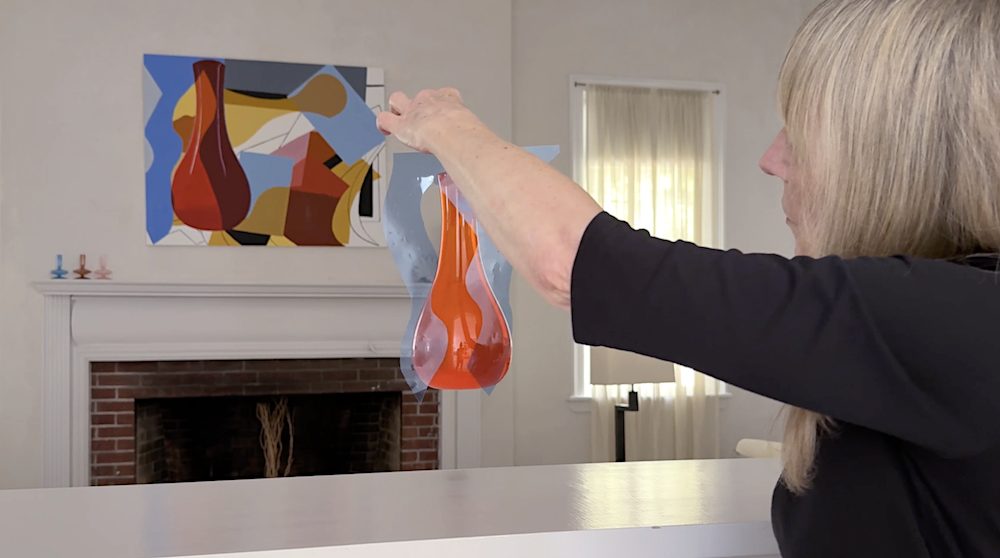
What was your journey after college, and how did you wind up in the Hudson Valley?
Ginnie Gardiner: After graduating from Cornell with a BFA in 1974, I moved to New York City. In 1977, I was appointed Director of New York City’s Federal Artist Employment Program, CETA Title One, “Artwork,” at the Foundation for the Community of Artists, where I placed hundreds of local artists and writers in art-related jobs. In 1978, I married Jonathan Phillips (b.1952 – d. 2020), a fellow art student at Cornell. We moved into a loft in the Chelsea neighborhood in New York City.
Then, from 1980 to 1987, I worked in advertising as a producer of test commercials for advertising agencies. As a commercial producer, I witnessed the transition from analog to digital video production techniques.
In 1987, when I began selling my paintings, I quit advertising to work full-time in my art studio in my loft. In the late 80s and throughout the 1990s, I had several solo exhibitions and was included in numerous group shows. I curated the exhibition, The Re-Assocated Image, in 1998 in Minneapolis, Minnesota, at Flanders Contemporary Art gallery, and co-curated Color as a Subject for the Artists Museum in Soho, New York City, in 1992 with Jon. I began working with collage maquettes, a technique I developed to combine photographs, painted color fragments, and drawings into a unified visual whole. I used laser prints and Photoshop to facilitate my process.
In 2005, we sold our loft in New York City and moved Upstate to the Village of Catskill NY, where we purchased, renovated, and restored a historic federal building. This has been my home and studio for twenty years.
Briefly describe or name the type of art you do.
Ginnie Gardiner: The through line for all my art since I started working in my 20s has been creating a study, whether it’s a collage or a photograph for my paintings, and also drawing either in my sketchbooks or highly composed drawings, contour drawing, gesture drawing, or fully rendered tonal drawings. That’s always been a through line in the way I compose.
Do you work on more than one at a time?
Ginnie Gardiner: I have been working on paintings within a broad framework for the last several years, which I call the Interspace series. This series recognizes that the negative spaces in my compositions are equally important as the shapes and figures I create. This focus comes out of my study of sculptors from the 1900s on, and abstract painters and artists who combine abstraction with figuration, and that’s where I would say I lie, because I work from life in creating my abstract compositions. I’m either studying color and mixing it optically, or I’m drawing the curves in a paper sculpture I’ve made, or I’m composing from a collage that I’ve laid out on the work table. So, it’s all about studying the shapes and shadows of objects, or the notes of color that make up a space. And I see a line as a location where a plane breaks, or turns, or a fold turns, and this creates the line. Color is created when two planes meet. I compose with color. It’s a combination of abstraction and perceptual painting because ultimately, it’s reducing everything to a two-dimensional plane, whether in a drawing or a painting.
What makes living in the Hudson Valley special for you?
Ginnie Gardiner: In terms of aesthetics, the light and architecture of the federal building I moved into transfixed me from the moment I first saw it in 2004. For the past 20 years, I have observed the afternoon light enter dramatically and often unexpectedly from seemingly impenetrable clouds that frequently hover over the Western Catskills. The light floods through the taller arches of the windows, the tapestry that the light creates, and the games that it plays with value and hue are a continual inspiration to me. Outside in the courtyard, a white stucco wall serves as a metaphor for the blank canvas, where my figures from 2011 to 2016 are more an organic part of a composition than a subject. From Spring to Fall, I often bring out my papers and objects to photograph in the afternoon. The unimpeded light combined with the privacy of an outdoor space to work in is a gift.
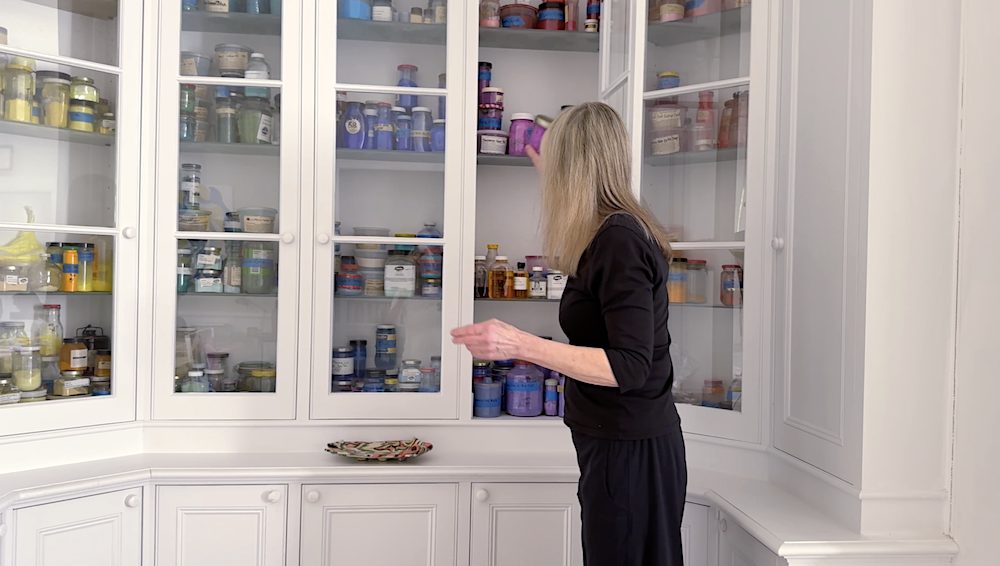

Ginnie Gardiner: In terms of the local artists’ community, two major curators have introduced hundreds of upstate artists to the general public. Alan Goolman has curated exceptional group and solo exhibitions at the Lockwood Gallery in Kingston since 2019, and is currently the Creative Director + Curator for the 68 Prince Street Gallery in Kingston. Kathy Greenwood, an artist, Curator + Director of the Albany International Airport’s Gallery Art and Culture Program, has produced exceptional group shows for the public.
What are the most challenging and the most rewarding aspects of being an artist?
Ginnie Gardiner: The most challenging is to make sure you always have time for your art. Missed hours and days can slip into weeks, months, and years, so it is crucial to keep it going. The most rewarding aspect of being an artist for me is the pleasure of deepening my understanding and mastery of my chosen mediums, oil painting, drawing, and collage.
What local businesses do you rely on to be successful?
Ginnie Gardiner: Bryanna Devine of Sidekick Visual has provided excellent support for me by designing my website, new book, working on archiving over 40 years of painting, and working with me on the management of all of this work with Artwork Archive, an online service.
What local business should we know about?
Ginnie Gardiner: In our village, Rivertide Center offers a beautiful, nurturing, and welcoming center for wellness and mindful movement practices, including yoga, fitness, and martial arts. Also, Magpie Bookshop @magpiebookshop, located on Main Street in Catskill NY, is a community secondhand bookshop. It is a huge plus for the Village of Catskill, with its two-story walls and stacks of books, and a relaxing atmosphere.
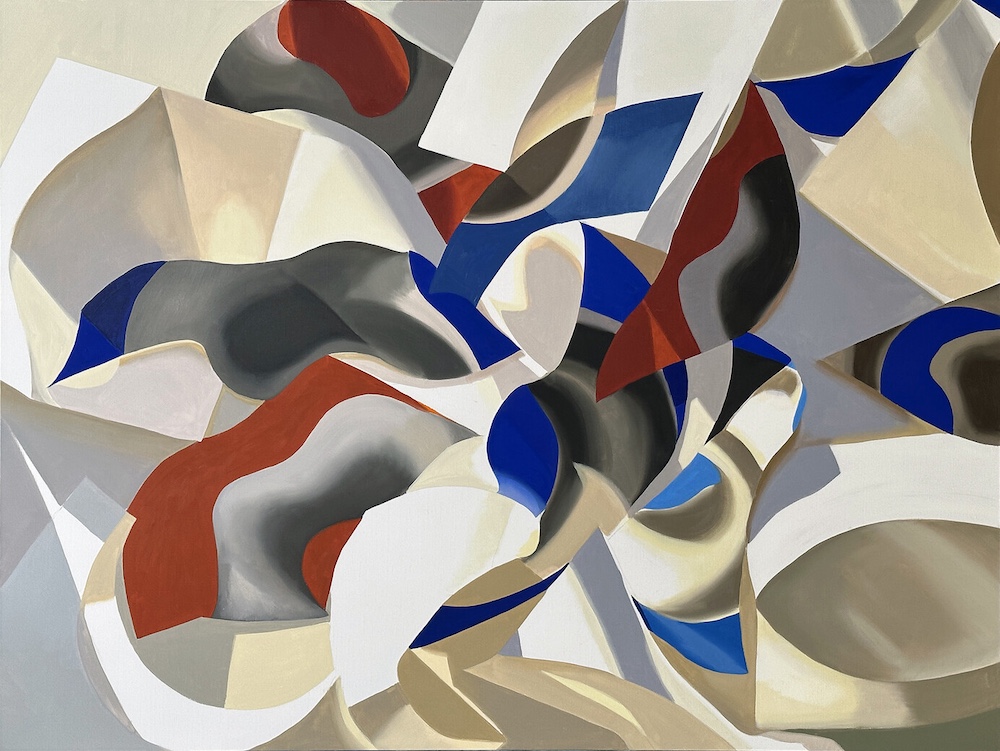
Who or what inspires you personally?
Ginnie Gardiner: I have read hundreds of biographies of artists. Their stories are an inspiration to me.
Tell us something about yourself that people would be surprised to know.
Ginnie Gardiner: In the 1990s, in New York City, I loved taking tap dance lessons at Broadway Dance, Steps on Broadway, and attending individual studio classes with master tappers in uptown Soho and the Village.
What are some of your favorite ways to unwind when you are not working in your studio?
Ginnie Gardiner: I’m a film and movie buff, and I enjoy streaming online series, especially when I’m preparing dinner in the evening. I frequently attend art openings and visit museums in the tri-state area.
Are you working on anything new that you’d like to share?
Ginnie Gardiner: I am pleased to announce that this Fall, a new 150-page book on my recent work, featuring 56 full-color artwork pages and an essay by Wendy Smith, titled Ginnie Gardiner: Change and Continuity—designed by Bryana Devine of Sidekick Visual—has been published. This book is a comprehensive showcase of my work over the past eight years.

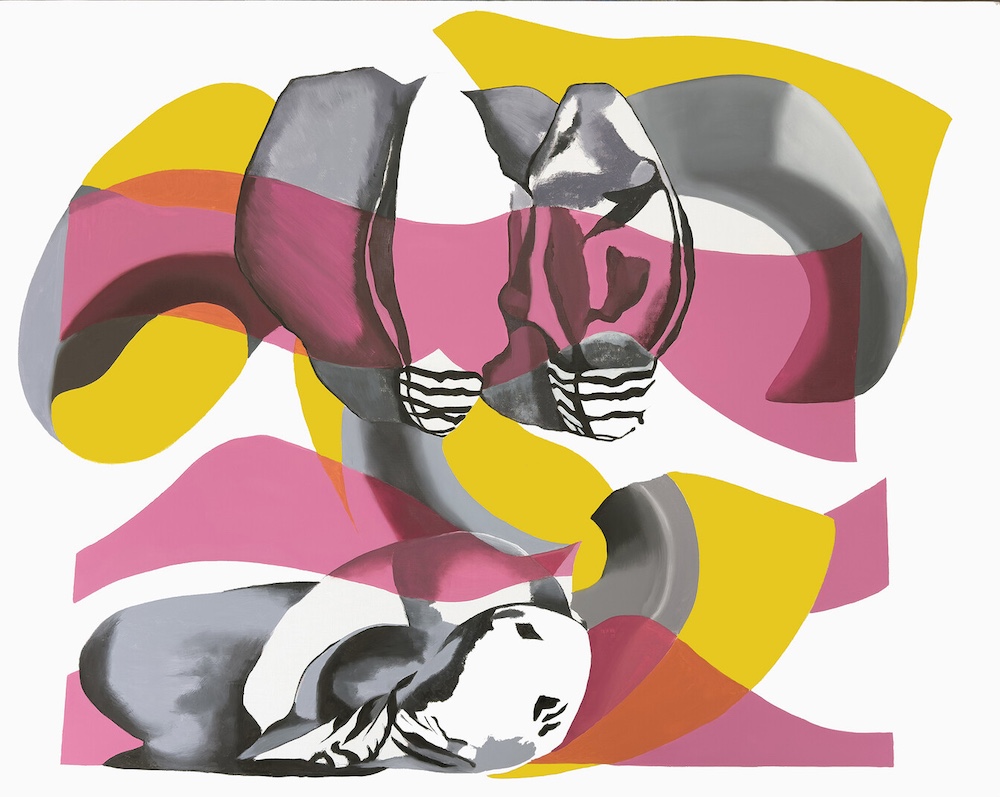
Photos courtesy of Ginnie Gardiner + Bryana Devine + littlebitcreates
Follow/Connect with Ginnie Gardiner via Website | Instagram
+ + +
See more of our IN THE STUDIO WITH… Artist Series:
In the Studio with Artist Elizabeth Keithline
In the Studio with Bespoke Ceramicist R.A. Pesce
In the Studio with Experiential Artist Amanda Russo Rubman
In the Studio with Multimedia Artist David McIntyre
In the Studio With Artist Olaf Breuning: Laughter in the Dark
In the Studio with Contemporary Artist Andrew Lyght
In the Studio with Mixed Media Artist Yoko Izu
In the Studio with Abstract Artist Joel Longenecker
In the Studio with Horticulturist and Encaustic Artist Allyson Levy
In the Studio with Multidimensional Artist David Kucera
In the Studio with Contemporary Expressionist Ransome
+ + +
This ongoing artist series was produced in collaboration with Richard Hall and Mimi Young, founders of littlebitcreates.
Richard Hall and Mimi Young are the creative forces behind littlebitcreates. They produce a variety of projects, including in-depth artist profiles, event-specific promotional videos, and music videos. Their approach is exciting, innovative, and contemporary. In addition to their client work, Hall and Young collaborate with other creatives to create multidimensional, neo-surreal videos as part of a noncommercial venture. Littlebitcreates emerged from the extensive knowledge Hall and Young gained over 30 years of experience in photo shoots and multimedia art. They exclusively shoot all of their videos on iPhones, appreciating the distinctive aesthetic it produces and the comfort it offers their subjects in front of the camera.
Follow + Connect with littlebitcreates via Website | Vimeo | @littlebitcreates
Write a Comment
You must be logged in to post a comment.



